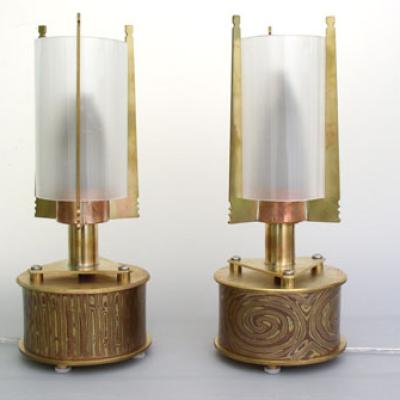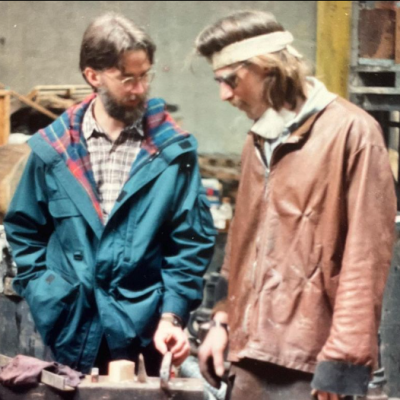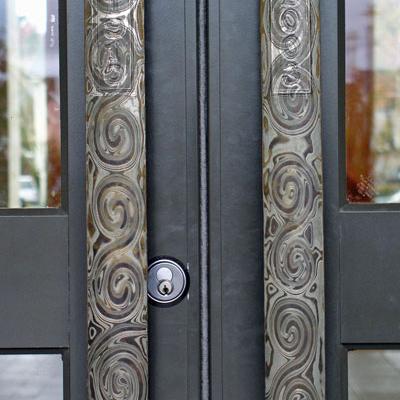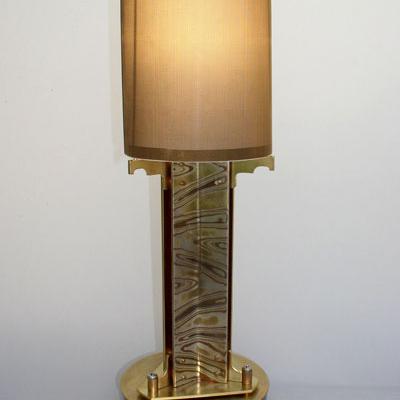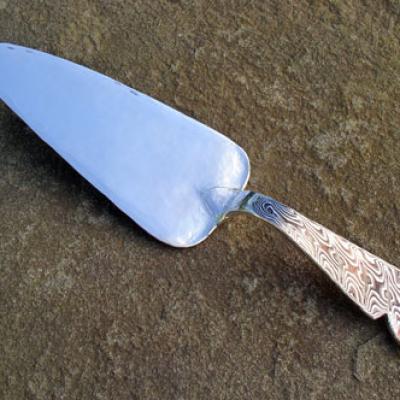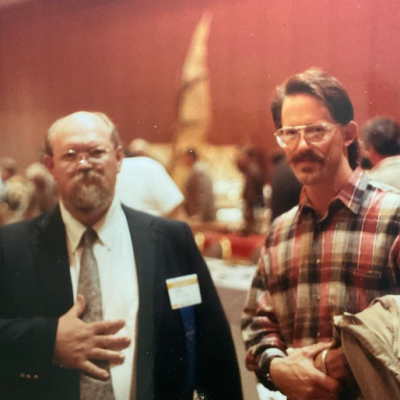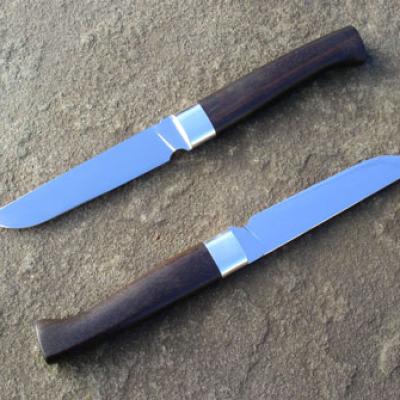Phillip Baldwin, 1953-2023
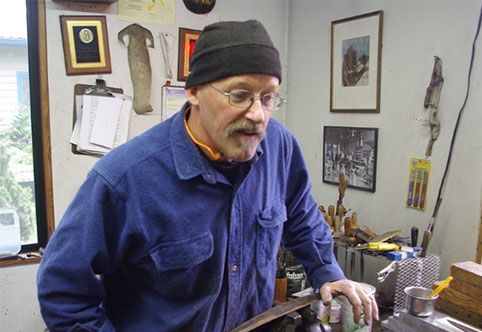

Everyone at DH Fell is deeply saddened to learn of the passing of legendary mokume-gane artist Phil Baldwin on August 24, 2023. His life and work has enriched our entire community of metalworkers.
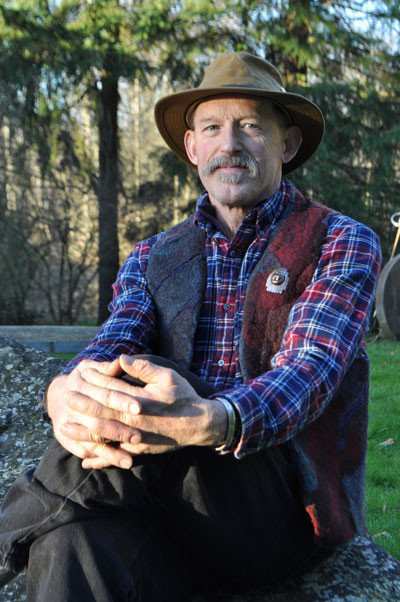 A pioneer in the mokume-gane field, Phil helped bring this once-obscure Japanese artform to the world. As a grad student at Southern Illinois University, he took part in the Mokume Research Project, which brought together mokume-gane artists from around the world to refine and modernize the original Japanese techniques, which involve layering different types of metal to create a wood grain effect. These efforts led to the formation of Phil’s company Shining Wave Metals and introduction of mokume-gane products to the American market in 1984. Once virtually unknown outside of Japan, the artform has only increased in popularity since then as more artists adopted Phil’s groundbreaking methods.
A pioneer in the mokume-gane field, Phil helped bring this once-obscure Japanese artform to the world. As a grad student at Southern Illinois University, he took part in the Mokume Research Project, which brought together mokume-gane artists from around the world to refine and modernize the original Japanese techniques, which involve layering different types of metal to create a wood grain effect. These efforts led to the formation of Phil’s company Shining Wave Metals and introduction of mokume-gane products to the American market in 1984. Once virtually unknown outside of Japan, the artform has only increased in popularity since then as more artists adopted Phil’s groundbreaking methods.
While Phil was perhaps mokume-gane’s finest practitioner, he would be the last one to take credit for its popularity. As he said at the premiere of the documentary film Blacksmith Boondoggle: The Making of “For Willene,” “Community support is absolutely essential in any field.” But as much as the development of modern mokume-gane was a team effort, Phil’s innovations were at the forefront of that effort, and his personality, generosity, and immense talent stood out from the rest and inspired a generation of metalworkers.
Phil had a thoughtful, philosophical outlook that made him a great problem-solver, a creative artist, and a technical innovator. “You have to kind of listen to what the metal wants to do,” he said in an article on the Ganoksin website. “All the technical practice in the world won't help you if you're fighting the metal. If you believe that you are imparting some of yourself into the work, your energy, your psyche, then it follows that you should approach it with respect. You might say it’s Japanese Philosophy, but to me it's natural, self-evident: when you work, do it right, do it with respect.”
He was one of those rare figures in which technical expertise, theoretical wisdom, and a refined eye for aesthetics came together in one person. He showed us that we can’t depend on science alone, or on art alone; we have to see the world from both perspectives to create truly great things. Take, for example, his rumination on the relationship between the tool and the worker: The hand tool is “not a separate entity—it's an extension of my will,” he said. “It has an almost kinetic power of its own, a power that lies in the potential of what we can do working together.” The worker, the tools, and the object being worked: they are all one.
This holistic approach to his work was evident in his personal life, as well. He took pride in growing and preparing his own food, and the tools he used for both tasks were tools he crafted himself. When he and his wife Layne worked in the garden, you might have found them digging with hand-made bronze gardening tools. When they prepared a meal together, they would do so with Phil’s own beautiful mokume-gane cutlery and silverware. Those who were close to him describe him as soft-spoken and dedicated, but not without a sense of humor. “He could always see the funny side of a situation,” said Phil’s longtime friend and colleague James “Wally” Wallace.
Though he leaves behind a diverse portfolio that includes jewelry, ancient weapons, and architectural work, Phil was best known for his knives. Already skilled in a variety of metalworking techniques before attending graduate school, he studied mokume-gane alongside experts from Japan and Viking pattern-welded steel blades in Denmark. His blades are stunning works of art that, as Wally pointed out, raise the question, “Do you keep it and put it on a stand because it's so pretty or do you throw it in the block and use it?” For all of their beauty, his blades were ultimately functional tools, the expression of the artist’s creativity married to the practical needs of the tool’s user.
His fusion of vision and execution earned him the respect of an entire generation of metalsmiths. “Phil was a craftsman’s craftsman, a master of blacksmithing, bladesmithing, silversmithing, Damascus steel and mokume-gane, all with a keen design sense, incredible hand skills and a knowledge of metals and metalworking that may never be rivaled,” said Steve Midgett, himself a world-renowned mokume-gane artist. “I believe his legacy lies in the work he did with his Shining Wave Metals company to develop the tools and techniques to commercially produce pre-patterned Mokume-gane that inspired thousands of metalsmiths, jewelers and bladesmiths to use this beautiful metal.”
A mainstream audience got a small peek at his talents when he appeared on Forged in Fire, a History Channel program in which blacksmiths compete to make the best version of a particular ancient or Medieval weapon. The halberd Phil produced for the show, which won him first place, exemplified his work, combining functionality and aesthetics.
For those who knew him, however, the show offered a glimpse into his personality. In the way he went about his business for the show, “he was just matter of fact and did it,” Mary Lee Hu, a legend of metalsmithing in her own right, said, which probably didn’t make for great TV. He didn’t have to struggle to figure it out, he didn’t mess up and have to start over, he just got to work. “They can't build a story around him because he just sits down and does it. Everything is so smooth and everything's choreographed. He's not fumbling around.”
His influence on the contemporary metals world cannot be overstated, thanks to his combination of engineering talents, his background in chemistry, and his aesthetic vision. As a graduate student, Phil was an “incredible dynamo of energy,” Wally told us, his inexhaustible creativity fueled in part by a diet of coffee grounds (not such a strange diet as grad student diets go). Working at the forge wasn’t work at all to him. “If we were somewhere where we had a fire and we had an anvil,” Wally said, “we used to just play at the forge and just make things,” whatever they could dream up with the materials at hand.
He didn’t keep all this knowledge to himself, either. Artist and metalsmith Jim Kelso remarked on the generosity of Phil, whose work with Japanese alloys laid the groundwork for Jim’s own gorgeous, unique art. Mary has also spoken of Phil’s generosity in sharing his knowledge with students and members of the metalsmithing community. He didn’t just talk about the importance of community support; he lived it.
It is through that generosity that Phil will live on. Even if they never met him, so many people working in metalsmithing or blacksmithing today have been influenced in some way by Phil’s work. We all owe him a debt of gratitude and would like to extend our condolences to his friends and family.


